Lino Printing
Posted: November 16, 2015 Filed under: 'Consultancy', Uncategorized | Tags: christmas, design, lino, print, Textile, wreath Leave a commentThis evening I have been experimenting with lino printing. I did quite a lot of experimentation with this method back in my art foundation so remember the technique and know it can be quite effective.
I decided to start off with creating a simple isolated wreath to get an idea of the size and for getting back into the technique again.
The set I own has black ink so although black isn’t in my colour palette I used the ink to get a couple printed out. I will then scan in and manipulate the colour digitally so that it does fit in my colour palette.
I also tried to create a coloured print so added white acrylic to the ink to lighten it. Then I mixed in blue and red to create the purple colour since I don’t currently have any other coloured inks. Its not a perfect match for my the purple/plum colour in my colour palette but it works well I think. I can also alter it digitally.

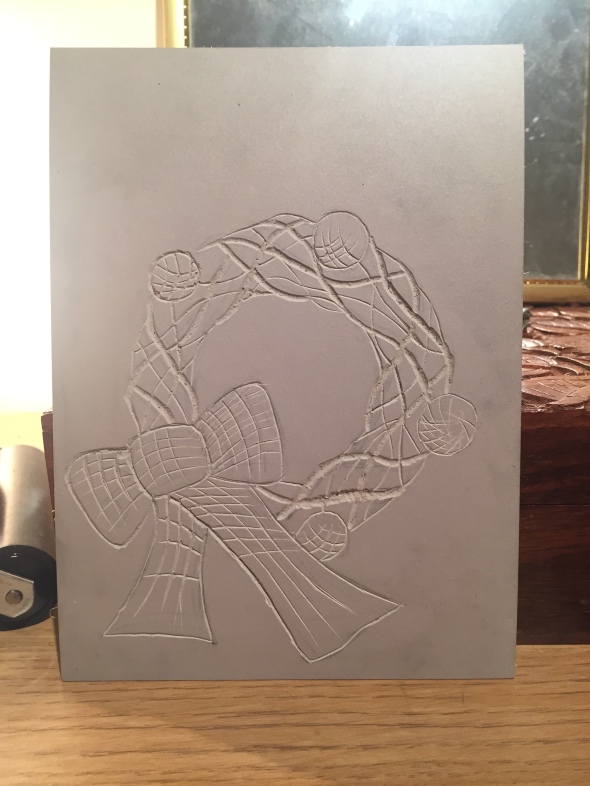

Stitch Workshop
Posted: November 9, 2015 Filed under: 'Consultancy' | Tags: Appliqué, christmas, needle felting, surface, Textile, texture, wreath Leave a commentI went into stitch today as I wanted to needle felt my batik wreath. I think it was quite effective as has given it more texture but I want to develop it further. I have cut it out as I want to maybe appliqué it onto another piece of fabric. However I had an after thought that maybe I should pad it a bit in areas with stuffing to make it even more 3 Dimensional.
I also want to stitch more detail into the berries so they stand out more.
Studio Space
Posted: October 21, 2015 Filed under: 'Consultancy' | Tags: Art, christmas, inspiration, mess, studio, Textile, theme Leave a commentMy studio space currently looks like a christmas explosion has occurred all over it. This is a good thing as I need to surround myself with christmas inspiration but it is rather busy which Im not very used to. I tend to prefer a neat clear board but for this project I am willing to accept it won’t be that way.
Print Workshop
Posted: October 19, 2015 Filed under: 'Consultancy' | Tags: christmas, design, print, Textile Leave a commentToday I made a screen using some of my small drawings I have produced so far. This was really a refresher for myself since I haven’t made a screen in a very long time as I haven’t done much screen printing in past projects. I really enjoyed it but forgot how long it takes. I’m glad I did it though as now I feel a lot more confident about going into the print room and making up my own screens by myself.
This was the original layout I wanted as I thought it would be good in a repeat however there were some marks on the screen which meant I had to manoeuvre the images around. Also this was only really meant as a practice to get ideas and see what worked well as some of the lines will be too thin and may not work too well.
Since there is quite a lot of waiting around when making a screen I decided to try a bit of batik.
I have decided I will needle felt into the left sample and make it more like a wreath.
The right two visuals I will work into further in separate ways. I will appliqué the bauble onto another piece of fabric and maybe add some stitch. I plan to scan the bow into photoshop and manipulate it further.
Pine Cone
Posted: October 16, 2015 Filed under: 'Consultancy' | Tags: Appliqué, digital-stitch, stitch, Textile Leave a commentToday I stitched out my pine cone using appliqué and digital stitch. I am really happy with how it has turned out and think it was very successful. I think this could be a possible lead for the gift tags of my final collection. But I will need to think about this more thoroughly.
Bauble Galore
Posted: October 12, 2015 Filed under: 'Consultancy' | Tags: bauble, christmas, design, digital-stitch, Textile Leave a commentIn digital stitch I created a small purple bauble which although it is only one singular design on its own it was relatively quick to stitch out once I had the design finalised. It would be interesting to scan or photograph this and manipulate it digitally so that the technique is still visible but could be worked into a pattern.
I also created a christmas tree pattern on the digital stitch programme which would take a rather long time to stitch due to the different colours I used and the text which is also included but I think it was quite effective. I might go in another day when it isn’t so busy in the stitch room and see if it an option to stitch it out.
Workshops: Digital Stitch week 1
Posted: October 9, 2015 Filed under: 'Consultancy' | Tags: basic, design, digital-stitch, practice, start, Textile Leave a commentOn Monday we went through the basics of digital stitch to get us used to the programme and the different options we can use. Maggie gave us all the same template to work with of quite simple shapes but this was so that we could all follow her directions and get used to the processes.
Today I wanted to try out my own drawings and turning them into digital stitch samples. I decided I would try and use my pen and pencil drawing of a pine cone. This will be appliquéd so I will use two different fabrics and then the line will create some detail.
I will stitch it out on Monday as I didn’t have enough time left for the stitching as it can take some time to use this method. The objects shape needs to be stitched on the top material choice then that needs to be cut out. Then I need to place the cut out shape onto the background fabric have that stitched directly on using the shape. Then change the thread and place back so that the lines creating the details and inner shapes can be stitched in.
All things Stitch
Posted: November 25, 2013 Filed under: ADZ4777 Subject | Tags: Appliqué, Art, Cross-stitch, Embroidery, Sew, Sewing machine, Textile 1 CommentFor the first four weeks of this term every Tuesday I had a stitch workshop. I am quite confident when it comes to sewing with machines however these workshops were very useful to remind me of techniques I had learnt as well as learn new methods. We had a health and safety introduction which led on to us using the machines. We practised with the different programmed stitches, applique, free machine embroidery, hand embroidery and dissolvable fabric which we then moulded into 3D shapes – mine is currently being used as a pencil pot on my desk.
The main things which stood out to me when looking back over the
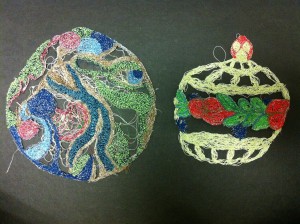
Sewn into disolvable material using imagery from my research and one of the trips to National Museum in Cardiff
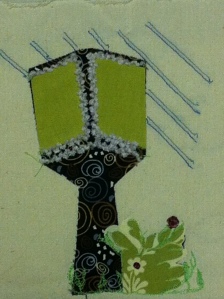
I used bondaweb to hold the material while I appliqued it to the Calico. I also used free embroidery and the double needle stitch.
block of stitch Tuesdays were the hand embroidery and using a variety of threads in the machine. I have not experimented much with hand embroidery through out the last couple years of my education in Textiles since it was not always seen as a viable technique compared to others we had covered. However, since learning the variety of basic and more challenging stitches I have been inspired to incorporate them into my work I produce over the next two workshop days. The other skill I have learnt which has stuck in mind was using hand thread in the bobbin case when using the machines to create texture. The first time is a similar experience to when an artist who has only ever used a pencil then incorporates more defining materials such as charcoal or ink. My eyes were opened to the variety of other threads I could use through the machine and how I could develop my work and the texture produced further.
Al Sadu Weaving
Posted: November 18, 2013 Filed under: ADZ4777 Subject | Tags: Beauty, Bedouin, Kuwait, Textile, tradition, Weaving Leave a commentOne of my lecturers at University has been exploring the history and current use of the ancient textiles method used in Kuwait known as Al Sadu Weaving. We have learnt from Dr Keireine Canavan’s developing research that the Bedouin women weavers’ reflect their rich heritage, the natural beauty of their surroundings, patterns and designs of the nomadic lifestyle.
Dr Keireine’s blog : http://alsaduweaving.wordpress.com/ has a lot more detail about her research and this very rare traditionial technique of weaving although here are a few of the main characteristics which stood out to me:
This very decorative craft is meant to be functional, it is vital for the nomadic lifestyle to continue in its traditional way
It is used to convey the creativity and history of their surroundings in the desert and coast where the nomadic lifestyle is based
A very reliable reference tool to understand the women who wove and the tribal nomads who have lived with them
This traditional technique which has been the source to record and reflect the Bedouin women’s lives is in danger of steadily declining to a point of no longer existing. The beauty of their work is inspiring and the fact it has been passed on to the next generation for such a long period of time is incredible. Contemporary work has been inspired by the patterns and bright colours however it would be devastating if this was the only connection left to this wonderous tecnique.
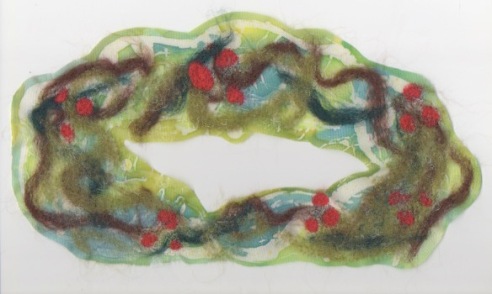


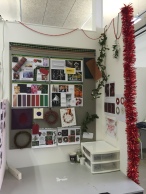





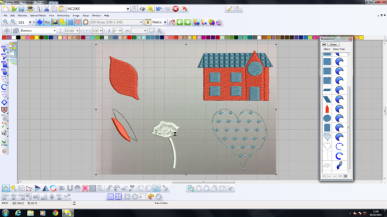



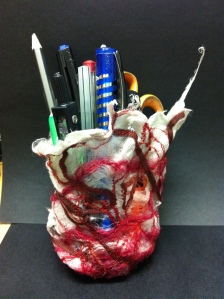
Recent Comments